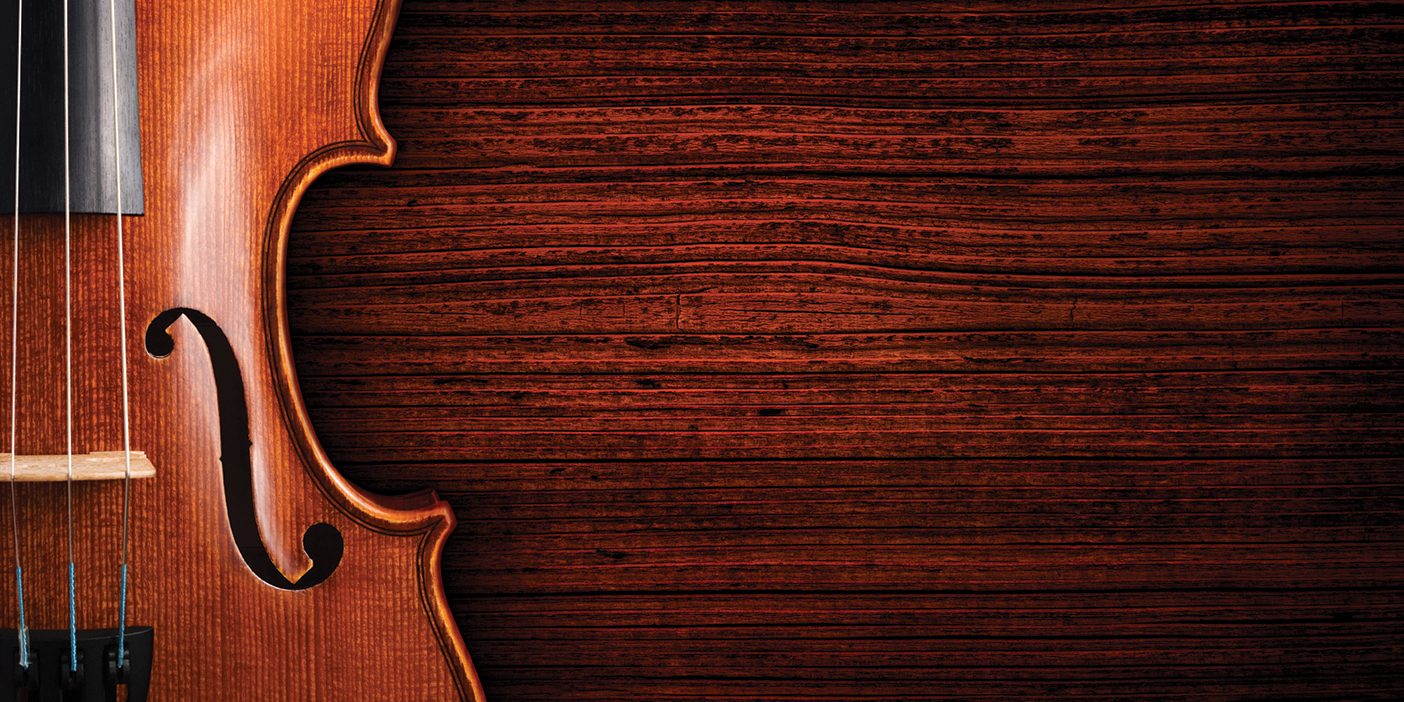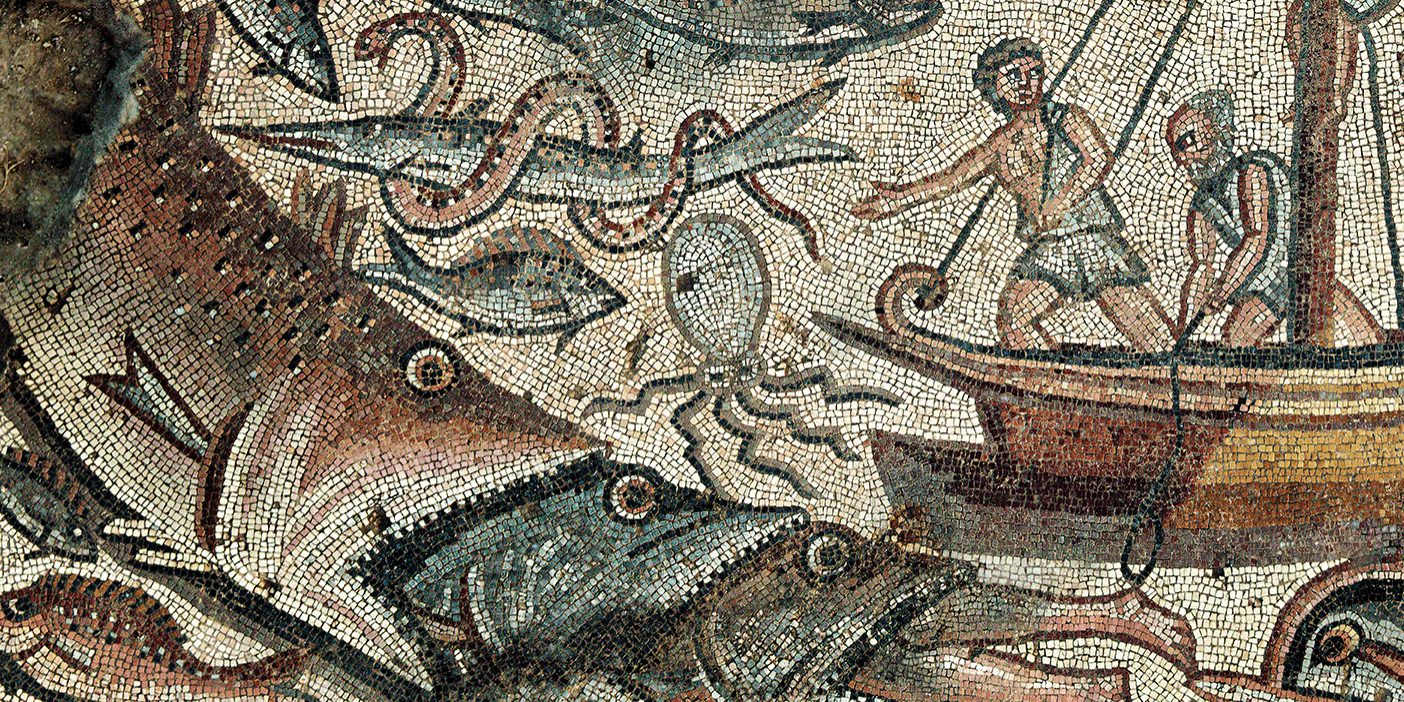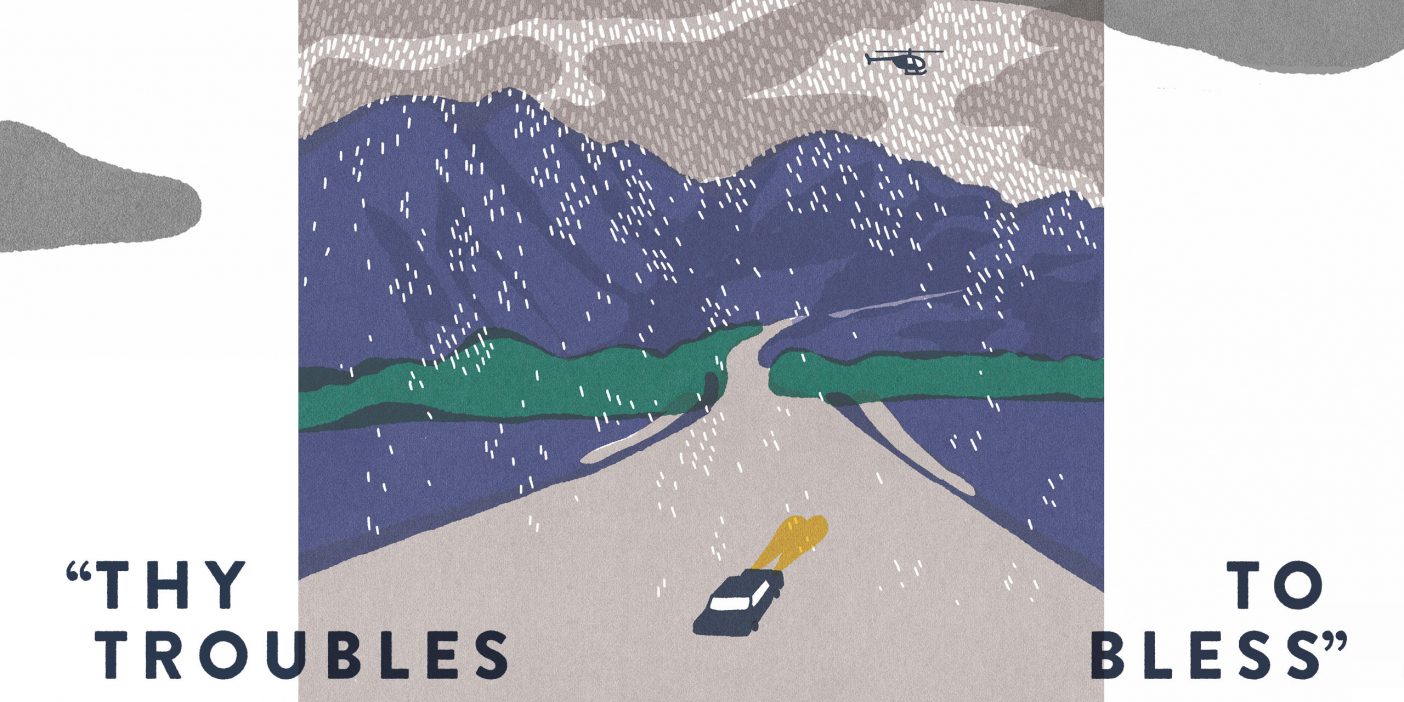Humble Uncertainty
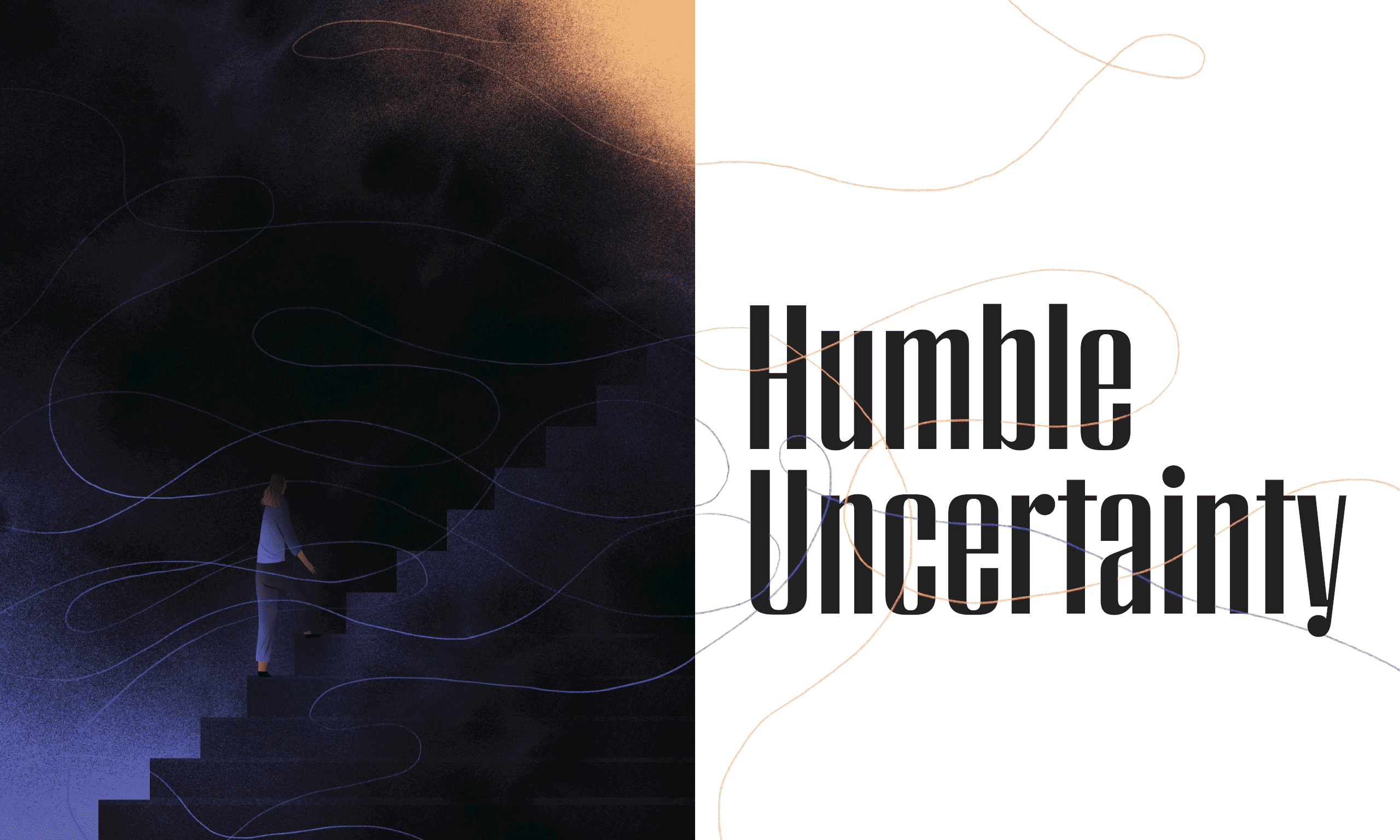
In confronting the darkness of the unknown, we can be still—and still moving.
By J. Scott Miller (BA ’82) in the Spring 2019 Issue
Illustrations by Nicole Xu
Think back to your time at BYU. Imagine if, during the second week of your first semester, while feeling sorry for yourself after failing a quiz, you had texted your parents about your doubts regarding your prospects for success in college. Consider the instant relief you would have felt had they immediately driven to Provo, packed you up, and taken you back home, where a fake diploma lay on your bed next to a note reading, “It’s just a piece of paper anyway!” That relief would likely have worn off rather quickly as you came to realize that you would be living the rest of your life in your parents’ basement!
College is much more than a piece of paper. It is all about the unique experiences you have, the struggle and confrontation with weakness, the self-discovery and overcoming, the ripening in wisdom, and especially the learning that happens with roommates and part-time jobs as much as—if not more than—in class.
Life itself is very much like college. There may be times when we wish for the tests to be simplified or waived altogether and when we forget that life is a complex system designed by loving Heavenly Parents to make us into better people and prepare us for an eternity of expanding opportunities. Sometimes, when we pray to have our trials end quickly, we are like first-year students sending home pity-me texts. If God were to immediately swoop in and rescue us, eternity itself might just prove to be something of a basement experience.
Instead, God, like other wise parents, knows that great things will come out of the difficulties and challenges we face. He knows our eternal identity and potential. We, on the other hand, are often clueless about that identity and live forever perched at the edge of a dark, inscrutable path we call the future. We cannot see what lies ahead, which can make our journey discouraging, if not utterly terrifying.
How might we move forward into the uncertain future to become all that God knows we can become?
Beauty in the Dark
Japanese writer Kajii Motojirō lived out his brief life at the beginning of the 20th century facing the ever-present specter of an early death from tuberculosis. In one of his creative essays, “A Picture Scroll of the Dark,” he mentions reading about a Tokyo burglar who was successful for years because he developed the ability to rob houses in total darkness. Kajii contrasts that burglar with most of us, quite helpless in and frightened of the dark:
The dark! Therein we can discern nothing; blackness shrouds all in thick, oppressive waves. Who can even think in such a state? How can we possibly move forward when there is no knowing what lies ahead? We have no other choice, however, but to proceed somehow, step by reluctant step, the first step fraught with pangs of distress, anxiety, terror. To take that step we may have to muster the passionate desperation one needs . . . to trample thistles with bare feet! ¹
The resolve—or desperation—required to take that step into the darkness explains why we often find it easier to remain in a well-lit room. Although we associate darkness with danger, ignorance, or evil, it makes up, on average, half of our lifetime and, as any astronomer will confirm, opens up to us billions of worlds. Our fear of the dark and stomping on thistles, however, can paralyze us.
Kajii sees darkness as a palpable representation of his impending death. He decides to try to make peace with the darkness by willfully walking at night without a lantern, journeying home from his friend’s inn alone in the gloom. He describes some terrifying moments, yet he persists in making his way along a narrow roadway. As he repeats this journey, night after night, his eyes begin to open—both literally and figuratively—as he encounters beauty in the darkness: the silhouette of trees against a star-filled sky, a nocturnal frog catching bugs beneath a street lamp, the odor of citrus leaves shredded by a rock he throws into the darkness. One scene in particular stands out:
One evening I noticed a man—like me, without a lantern—walking farther up the road. I saw him because his figure suddenly appeared in the illuminated space in front of [a solitary] house. The man, his back turned to the light, gradually receded into the darkness and vanished. I watched the entire scene, moved in a strange, singular way. Stirred by the man’s disappearing figure, I thought, “In a short time I’ll be walking into the darkness just like him. If someone were to stand here, observing, they’d probably see me vanish, the same way he did.”²
“How can we possibly move forward when there is no knowing what lies ahead?”
Kajii concludes that the pathway is anything but solitary; there are others who choose to walk alone in the dark to discover its hidden aesthetic pleasures. As he watches the traveler disappear into the darkness, he considers—perhaps for the first time—that there could be others behind him for whom his sudden appearance and disappearance would be equally shocking, cheering, and instructive.
Although there are many ways to read this encounter, I see it as one that inspires hope. Glimpsing someone ahead on the same path, Kajii discerns that just as one can discover beauty and tranquility in darkness, so can one hope that there is an abundance of both light and beauty in that darkness we now fear as death. Our bias against the dark can blind us to a whole world of new and edifying experiences.
These things we fear have their positive sides too, and we should not be so consumed by our fears and uncertainties that we abandon hope and never move forward. There was a reason Moses, Lehi, and Brigham Young were all commanded to leave comfort and security and strike off into the wilderness. That is where the burning bush, the Liahona, and Zion were awaiting. When we muster the faith to confront our doubts and fears by venturing forward into the dark unknown, we may learn that simple faith might be as fragile as starlight but that it can also guide our journey, fixed as the North Star.
The Darkness of God
We can discover similar insights from an author who was contemporary to Kajii but lived halfway around the world. T. S. Eliot was a British Modernist writer whose poem “East Coker,” published on Easter Sunday of 1940, deals with Eliot’s conversion to Christianity in his 30s. Eliot’s poem describes searching for God in the stillness of the dark:
I said to my soul, be still, and let the dark come upon you
Which shall be the darkness of God. As, in a theatre,
The lights are extinguished, for the scene to be changed.³
Eliot suggests that “the darkness of God” is not an empty void but rather a place of possibility, a brooding space in which endless opportunities line up, like a darkened theater awaiting the next act of a play. Our spiritual quest involves a series of journeys between zones of light and darkness. Eliot describes a sense of dread as we move forward into “the darkness of God” in search of spiritual truth:
Or as, when an underground train, in the tube, stops too long between stations
And the conversation rises and slowly fades into silence
And you see behind every face the mental emptiness deepen
Leaving only the growing terror of nothing to think about.⁴
Eliot’s passengers have grown so used to speeding forward in an artificially illuminated world that they begin to panic when faced with static darkness—a dread akin to what we might feel the moment we realize we left our phone at home. As Eliot suggests, our fear of the dark can be paralyzing, but he goes on to imply that some of our greatest learning opportunities happen in our darkest times. Rather than stand frozen in fear, we can reach out and discover God.
Crises of Uncertainty
Both Kajii and Eliot used light and darkness as metaphors for a kind of spiritual quest: moving from the known to the unknown, from the familiar and mundane to hidden realms of possibility. And both suggested that, accustomed as we are to constant illumination, we may come to expect answers to just appear.
In our spiritual journey we may feel reluctant to move forward along a path that leads into the murkiness of things we do not know or things we doubt. To echo Kajii, “How can we possibly move forward when there is no knowing what lies ahead?” Perhaps, as we stand poised to test our faith once more by stepping forward into the void, we anticipate only spikes of pain. Or perhaps, like Eliot’s passengers, whose minds go blank, we hesitate out of fear of spiritual emptiness, a growing terror of nothing to believe in. This state, often described as a crisis of faith, is more accurately a crisis of uncertainty—a crisis fueled by our confrontation with different kinds of doubt present as we stand at the edge of our spiritual comfort zone, staring into the dark unknown.
Although we often think of doubt simply as a synonym for willful disbelief, I would like to suggest that different kinds of doubt affect us in different ways. Let me describe three kinds: two stunting doubts rooted in pride and fear as well as a third, soul-expanding doubt, rooted in humility and faith.
Dropout Doubt
Observing others applying faith in their lives can be an exhilarating experience. It can seem so natural and easy, like the performance of a virtuoso musician, that we forget the long hours of practice that went into acquiring that skill. This was certainly the case when Oliver Cowdery was helping Joseph Smith translate the Book of Mormon. Oliver, a gifted teacher, was eager to try his hand at the miracle of translation that Joseph seemed to accomplish with ease. After asking God, Joseph allowed Oliver to try. The result was one of the most instructive concepts in latter-day scripture: we must study it out in our mind and then ask God for a response to our decision (see D&C 9:7–8). In Oliver’s case this formula worked well until Oliver’s fear undermined his ability to translate.
The Lord did not condemn Oliver for his fear; in fact, He pointed out how Oliver and Joseph formed a well-balanced translation team. However, Oliver spent a decade brooding over his inabilities and uncertainties and struggling with his pride in the face of Joseph’s leadership before separating himself from the Church for a time. After wandering sideways, he once more returned to the comfort and blessings of his faith. The price he paid for yielding to his doubts and dropping out was high, however, given the wealth of spiritual manifestations and blessings he missed out on during his absence.
When we doubt ourselves or God because our unique spiritual journey is different from that of others or when our pride gets hurt in the day-to-day interactions with fellow wanderers along the path, we may, like Oliver, feel as though the lights have gone out and find ourselves fidgeting in our theater seats, not really sure what is going on or upset by what happened in the first act of the play. In our impatience or dissatisfaction, we may exit the theater too soon, abandoning our faith and the personal growth it will bring for some distracting sideshow. I call this crisis of uncertainty “dropout doubt” because we prematurely remove ourselves from our best opportunities to learn and grow.
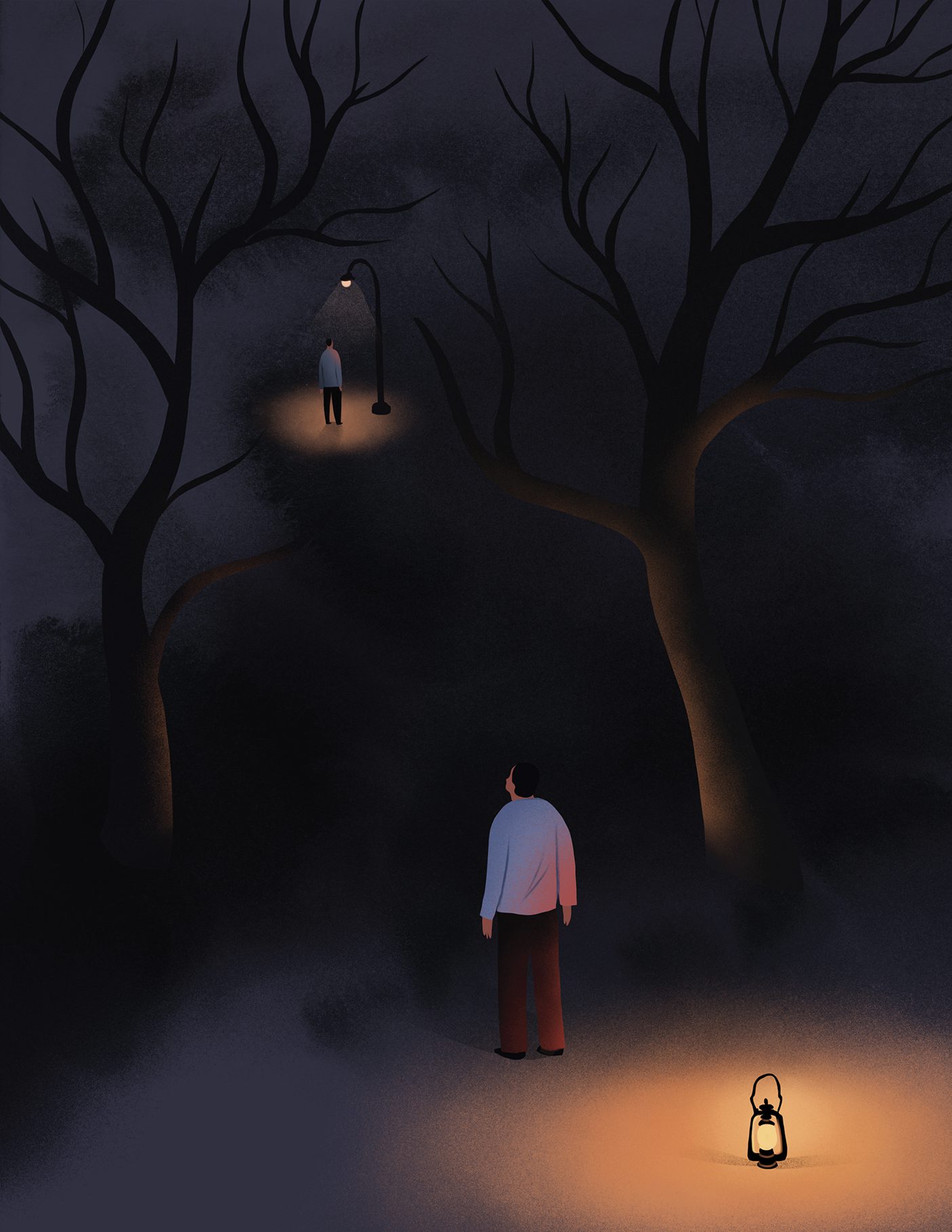
Denial Doubt
A second kind of doubt is akin to a compulsive fear of the dark. In this case we avoid acknowledging any uncertainty—things we do not know, things we secretly fear might not be true, or things that cannot be known at the present time—and focus instead on only what we do know for certain. We conveniently ignore Alma’s assertion that “faith is not to have a perfect knowledge of things” (Alma 32:21). By choosing to stay put in our secure but limited place, we are not actually practicing faith but rather allowing it to lie dormant. Faith materializes only when we act upon it and move forward into the darkness, one step at a time.
Our bias for certain knowledge can blind us to our own spiritual weaknesses as well to others’ struggles. Staring into the unknown, we may fear vulnerability so much that we ignore or even try to hide our weaknesses, restrict the range of our beliefs, and distance ourselves from those whose lives are complicated by trials and tribulations. Perhaps we fear that others’ doubts will poison our tenuous faith. This fear constitutes a crisis of both faith and humanity because it isolates us and prevents us from connecting with others and relieving one another’s burdens. I call this crisis of uncertainty “denial doubt” because we allow fear to block our progress.
Humble Uncertainty
Dropout doubt and denial doubt proceed from pride and fear, limiting our growth and shrinking our faith. There is, however, a soul-expanding kind of doubt that proceeds from an attitude of humility—the species of humility that openly admits our weaknesses. When we begin to see ourselves and our weaknesses clearly, we arrive at a state of vulnerability similar to what Joseph Smith faced as he unwittingly prepared himself for the Sacred Grove. Troubled by his weaknesses, Joseph was concerned about his standing before God, and as he sought reassurance, his study of local religions brought on other uncertainties—most important, his question about which, if any, religion was true. As with Joseph Smith, our uncertainties are very often grounded in the personal and then proceed to the doctrinal: we feel our failures, wonder about our status before God, question if God really loves us, and then try to find Him.
Some of us may be more uncertain about ourselves than we are of the gospel, while others may emphasize doctrinal uncertainties to hide self-doubts. In both cases the question “Can we be true to it?” may eclipse “Can it be true?”
At the core of self-doubt is a very real confrontation with the unknown darkness of who we really are, of our full potential. If we muster the faith to step on that particular thistle, to fully engage our weaknesses as the Spirit reveals them to us, and in that humble state reach out to God in faith, we know that He will “make weak things become strong unto” us (Ether 12:27) and that we will find beauty and hope in the darkness. If we are sincerely moving forward in our spiritual progress, then we should expect and even embrace opportunities to confront questions and uncertainties that humble us and help us to expand and strengthen our faith.
Regardless of how powerful or effective our faith might have been in the past, each new experience in life requires that we draw upon our faith in a new way. If we do not actively move forward again and exercise our faith during new challenges, we might grow too comfortable in our limited knowledge and risk becoming something like Napoleon Dynamite’s Uncle Rico with faith-promoting experiences, reliving them rather than enjoying new ones.
Given the dangers that smugness poses to our growth potential, life offers plenty of puzzling hints, paradoxes, and contradictions to remind us we do not yet understand the big picture. Rather than caution us to avoid these mysteries, God encourages us to look closely and observe the world around us, to study it carefully—“things both in heaven and in the earth” (D&C 88:79); “all good books, and . . . languages, tongues, and people” (D&C 90:15); as well as “the wars and the perplexities of the nations” (D&C 88:79). Along the way we will have questions—we will need to have questions—and will find that the more we learn, the more we will realize how little we actually know. By combining humility about the limits of our knowledge with honest questions about life’s perplexities, we demonstrate the kind of humble uncertainty that will expand our souls.
An Unexpected Answer
One of my own crises of uncertainty happened in my mid-teens, when I was working one summer at a remote wilderness Scout camp, a welcome refuge from the turmoil at home, where my parents were divorcing. I lived alone in a tent and would often take my proto-iPod—a portable cassette tape player—out with me at night to a hillside overlooking the lake and play music while watching the stars and contemplating my tiny place in the cosmos. Sometimes I would even try walking to and from my destination without a flashlight, especially if the night sky was clear and the moon was bright—a journey that was equally thrilling and frightening. I would begin and end the day in my tent reading from the Book of Mormon, and, despite my inner turmoil, I felt a growing reassurance from the words I read.
Many evenings after dinner, some of the older staff would air grievances about the Church, critique various Church leaders, parrot the cynical views of their worldly professors, and generally trash people and sacred practices I held dear. What they said was new to me, and I felt compelled to listen. Sometimes I tried to challenge their views, but that put me in the uncomfortable role of antagonist—not a good fit for someone my age (and height). And so I mostly just listened, mulling over their critiques.
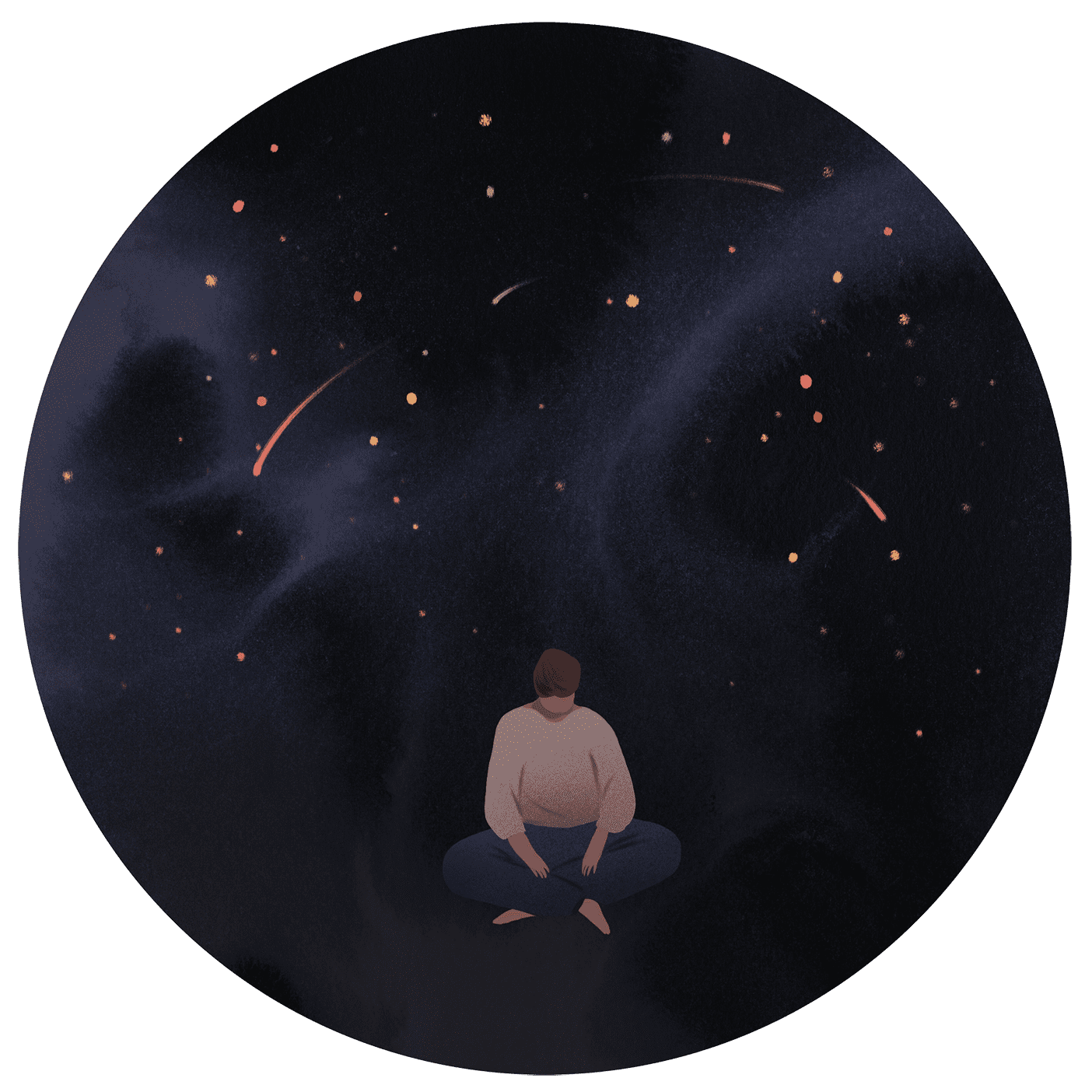
I quickly saw that buying into their cynicism meant risking my own faith. Underlying the unsettling things I heard in the dining hall were my own nagging doubts about my personal flaws and failures. These revolved around challenges I faced while learning to teach unruly Scouts but more poignantly around my growing awareness of personal weaknesses that our family problems brought to the fore.
Confronting the terrible darkness of personal and doctrinal uncertainty, I decided to pray, framing my question simply: “Is the Church really true?” Behind that question was an implied one: “Can I really be true to the Church?” When the answer finally came, after some period of tension and suspense, it was not in the form of a yes or a no but of deep and profound feelings of love and inner peace accompanied by a singular and distinct impression that my soul was eternal.
That wholly unexpected answer taught me how little I know about the nature of our existence in general and God’s all-encompassing love in particular. The experience became an inseparable part of how I have come to interact with others and the world. My life since then has been punctuated by sporadic moments of humble uncertainty, followed by answers to prayer I do not expect—answers that reveal the narrowness of my expectations and that can transform me into something better than I know.
“For Us, There Is Only the Trying”
As any parent or teacher can testify, there is nothing so exciting as watching someone learn and grow. God feels the same way and has set up a plan to allow us all to pass our mortal schooling—God does not grade on a bell curve. His plan depends upon our making mistakes. He wants us to explore the full dimension of life, walking in the light of faith and making our way through periods of uncertainty.
It is sometimes easy, in the process of learning, to assume that our words or powers of reason are sufficient to describe and measure the entire cosmos, but when it comes to really understanding creation, as Joseph Smith said, we are as “a babe upon its mother’s lap.”⁵ When we focus only on the light of what we know and are afraid to explore what lies beyond that familiarity, we miss opportunities for discovery. Likewise, when we do make mistakes or stumble in the dark, it is tempting to retreat to our parents’ basement or to abandon our journey altogether.
Eliot concludes his poem “East Coker” with the following insight about the conversion process:
We must be still and still moving
Into another intensity
For a further union, a deeper communion. . . .
. . . In my end is my beginning.⁶
We must “be still”—as in silent, waiting hopefully and patiently in the dark—and “still moving / Into another intensity,” proceeding apace toward a union with God and communion with fellow Saints who are also walking in the darkness, propelled forward by faith. The end of the lighted path marks the beginning of our spiritual journey; to make progress is to confront the darkness.
Like Kajii, as we muster the courage and faith to walk forward into that darkness, I know that we will discover beauty we never suspected, as well as fellow travelers. Indeed, as we allow our faith to propel us forward beyond our current limited knowledge into a humble uncertainty, we can discover greater things illuminated by the dim light of our faith, even Christ walking ahead of us, showing us the way forward and providing answers we do not expect.
This drama will play out over and over again in our lives if we are on the right path because such a transformative experience is at the heart of all true learning and wisdom. Eliot’s poem describes the range of our responsibility in this process: “For us, there is only the trying.”⁷ It is a principle of growth—and an article of my personal faith—that trying, always trying, will ultimately bring us to the knowledge we seek. May we have the faith to continue stepping humbly into the uncertain void, transcending our own feeble understanding, and, through faith and endurance, come to behold the marvels and beauties of all creation.
J. Scott Miller, dean of the BYU College of Humanities, delivered the devotional address from which this article is adapted on Oct. 2, 2018. The full text, along with audio and video of the talk, can be found at speeches.byu.edu.
Send comments on this article to magazine@byu.edu.
NOTES
- Kajii Motojirō. “Yami no emaki” (“A Picture Scroll of Darkness”), September 1930. Translation by the author.
- Kajii. “Yami no emaki.”
- Eliot, T. S. “East Coker,” in Four Quartets, no. 2, part III.
- Eliot, T. S. “East Coker,” part III.
- Quoted in Wilford Woodruff, Conference Report of The Church of Jesus Christ of Latter-day Saints, April ١٨٩٨, p. 57.
- Eliot, T. S. “East Coker,” part V.
- Eliot, T. S. “East Coker,” part V.


